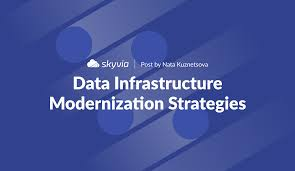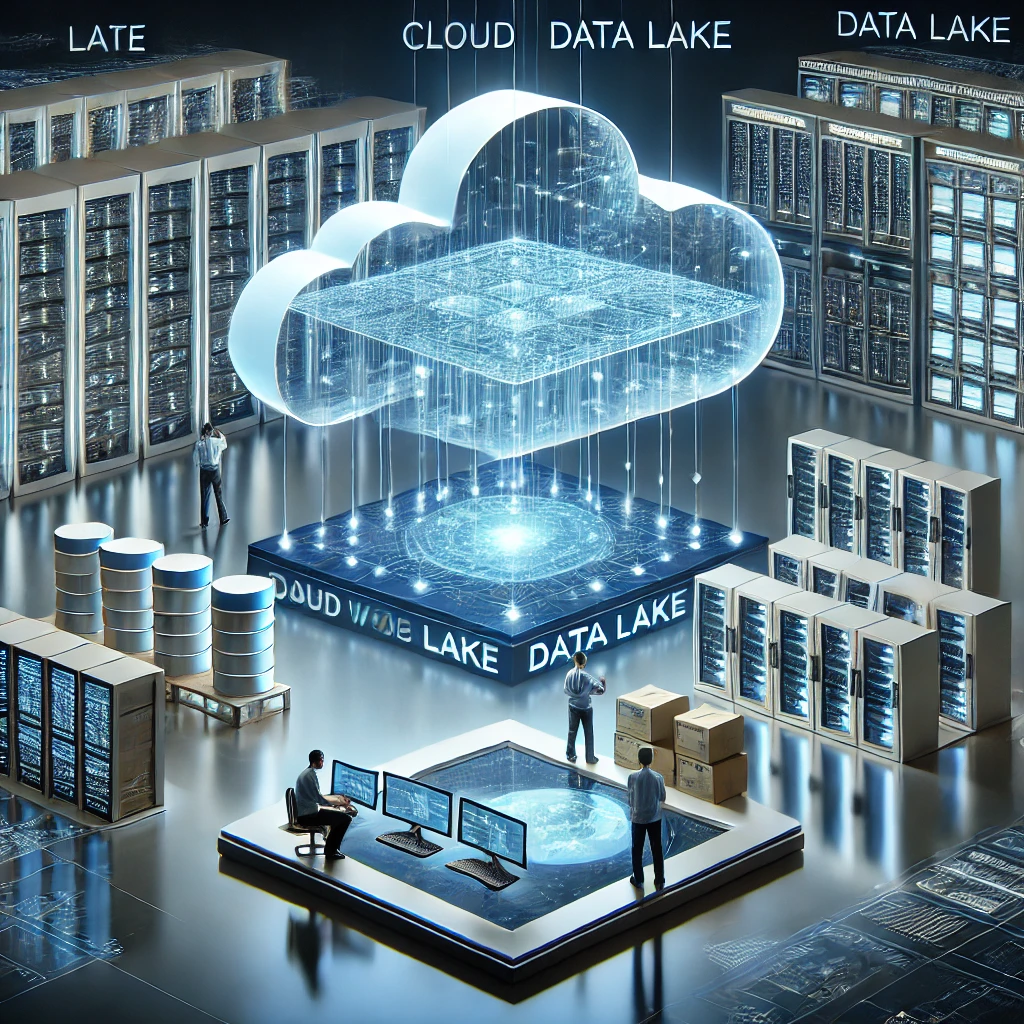Modern Data Infrastructure: Components, Tools, and Best Practices 2024
A modern data infrastructure is the foundation of data-driven decision-making. It enables businesses to collect, store, process, and analyze vast amounts of data efficiently. With advancements in cloud computing, real-time analytics, and data automation, organizations can leverage modern tools to build scalable, flexible, and cost-effective data pipelines.
In this guide, we will explore: ✅ Key components of modern data infrastructure
✅ Cloud Data Warehouses and Data Lakes
✅ Data ingestion, transformation, and orchestration
✅ Customization and best practices
1. What is Modern Data Infrastructure?

A modern data infrastructure integrates various technologies, tools, and processes to handle structured and unstructured data.
✅ Key Features:
- Supports batch and real-time data processing.
- Uses cloud-based storage and computing.
- Automates data transformation and modeling.
- Ensures scalability, security, and governance.
💡 Example:
A retail company uses modern data infrastructure to ingest customer transactions in real-time, process data for insights, and train AI models for personalized recommendations.
2. Diversity of Data Sources

Modern organizations collect data from multiple sources, including:
- Internal databases (PostgreSQL, MySQL, Oracle)
- Web analytics tools (Google Analytics, Adobe Analytics)
- APIs and SaaS applications (Salesforce, Shopify)
- Event streaming platforms (Apache Kafka, AWS Kinesis)
- Log files, CSVs, and flat files
- Cloud storage (Amazon S3, Google Cloud Storage)
💡 Example:
An e-commerce platform stores user activity data in Google Analytics, while purchase data is recorded in a PostgreSQL database.
🚀 Challenge: Integrating multiple data sources efficiently.
✅ Solution: Use data ingestion tools to automate data movement.
3. Data Ingestion in Modern Infrastructure

A. Data Ingestion Methods
🔹 Batch Processing → Moves data in scheduled intervals.
🔹 Real-Time Streaming → Processes continuous data streams.
✅ Types of Data Interfaces:
| Data Source | Interface |
|---|---|
| Databases | Direct queries (SQL-based ingestion) |
| REST APIs | JSON, XML responses |
| Event Streams | Kafka, Pulsar, AWS Kinesis |
| Cloud Storage | Amazon S3, Azure Blob, Google Cloud Storage |
| Log Files | Flat file processing (CSV, JSON, Parquet) |
🚀 Choosing the right ingestion method depends on data volume and latency requirements.
4. Cloud Data Warehouses and Data Lakes

A. What is a Data Warehouse?
A Data Warehouse (DW) stores structured data optimized for analytics.
✅ Key Features:
- Schema-on-write (structured data storage)
- Optimized for BI reporting
- Fast query performance
🔹 Popular Cloud Data Warehouses:
| Service | Provider |
|---|---|
| Amazon Redshift | AWS |
| Google BigQuery | Google Cloud |
| Snowflake | Multi-cloud |
| Azure Synapse | Microsoft |
💡 Use Case:
A finance team uses Snowflake to run monthly sales reports on aggregated data.
B. What is a Data Lake?
A Data Lake stores raw, semi-structured, and unstructured data.
✅ Key Features:
- Schema-on-read (data is structured during querying)
- Cost-effective storage for large datasets
- Supports AI, ML, and big data processing
🔹 Popular Data Lakes:
| Service | Provider |
|---|---|
| AWS S3 Data Lake | Amazon Web Services |
| Google Cloud Storage | Google Cloud |
| Azure Data Lake Storage | Microsoft |
💡 Use Case:
A media company stores video logs and user behavior in a Data Lake for AI-based content recommendations.
🚀 Many organizations combine Data Warehouses and Data Lakes for a hybrid approach (Lakehouse).
5. Data Transformation & Modeling

A. What is Data Transformation?
Data transformation converts raw data into an analytics-ready format.
✅ Common Transformations:
- Data cleaning (handling missing values, duplicates)
- Data aggregation (summing, averaging, grouping)
- Data enrichment (merging datasets)
- Timestamp conversion (adjusting time zones)
🔹 Example:
Converting an email address into a hashed value to protect Personally Identifiable Information (PII).
B. Data Modeling
🔹 What is Data Modeling?
A data model structures and defines data to optimize queries and analytics.
✅ Key Considerations:
- Normalization vs. Denormalization (balancing storage & performance)
- Star and Snowflake Schema (common in BI tools)
- SQL-based modeling (dbt, LookML, Power BI)
🚀 Best Practice: Choose SQL-based models for better accessibility across engineering & analytics teams.
6. Workflow Orchestration in Data Pipelines
🔹 Why Orchestration?
As the number of data pipelines grows, it becomes difficult to schedule and monitor tasks.
✅ Key Functions of Workflow Orchestration:
- Scheduling ETL/ELT processes
- Managing dependencies between data tasks
- Automating data workflows
🔹 Popular Workflow Orchestration Tools:
| Tool | Use Case |
|---|---|
| Apache Airflow | General workflow orchestration |
| AWS Glue | Serverless ETL on AWS |
| Kubeflow Pipelines | ML workflows |
| Dagster | Data pipeline orchestration |
💡 Example:
A data team uses Apache Airflow to run a daily ETL job that moves sales data from PostgreSQL to BigQuery.
🚀 Best Practice: Implement error handling & retry mechanisms in workflows.
7. Customizing Data Infrastructure
No two organizations have identical data architectures.
✅ Common Trade-Offs in Data Infrastructure:
| Factor | Build Custom | Use SaaS Tools |
|---|---|---|
| Cost | Higher (engineering resources) | Pay-as-you-go pricing |
| Flexibility | Fully customizable | Limited by vendor |
| Maintenance | Requires DevOps support | Managed by provider |
🚀 Best Practice: Evaluate build vs. buy based on resources, security, and business needs.
8. Final Thoughts
A modern data infrastructure integrates scalable cloud storage, real-time processing, and automation to enable data-driven decision-making.
✅ Key Takeaways:
- Data ingestion tools automate movement from diverse sources.
- Cloud data warehouses & lakes optimize storage & analytics.
- Transformation & modeling make data queryable.
- Workflow orchestration streamlines pipeline automation.
- Customization depends on trade-offs between flexibility & cost.
💡 What tools do you use in your data infrastructure? Let’s discuss in the comments! 🚀